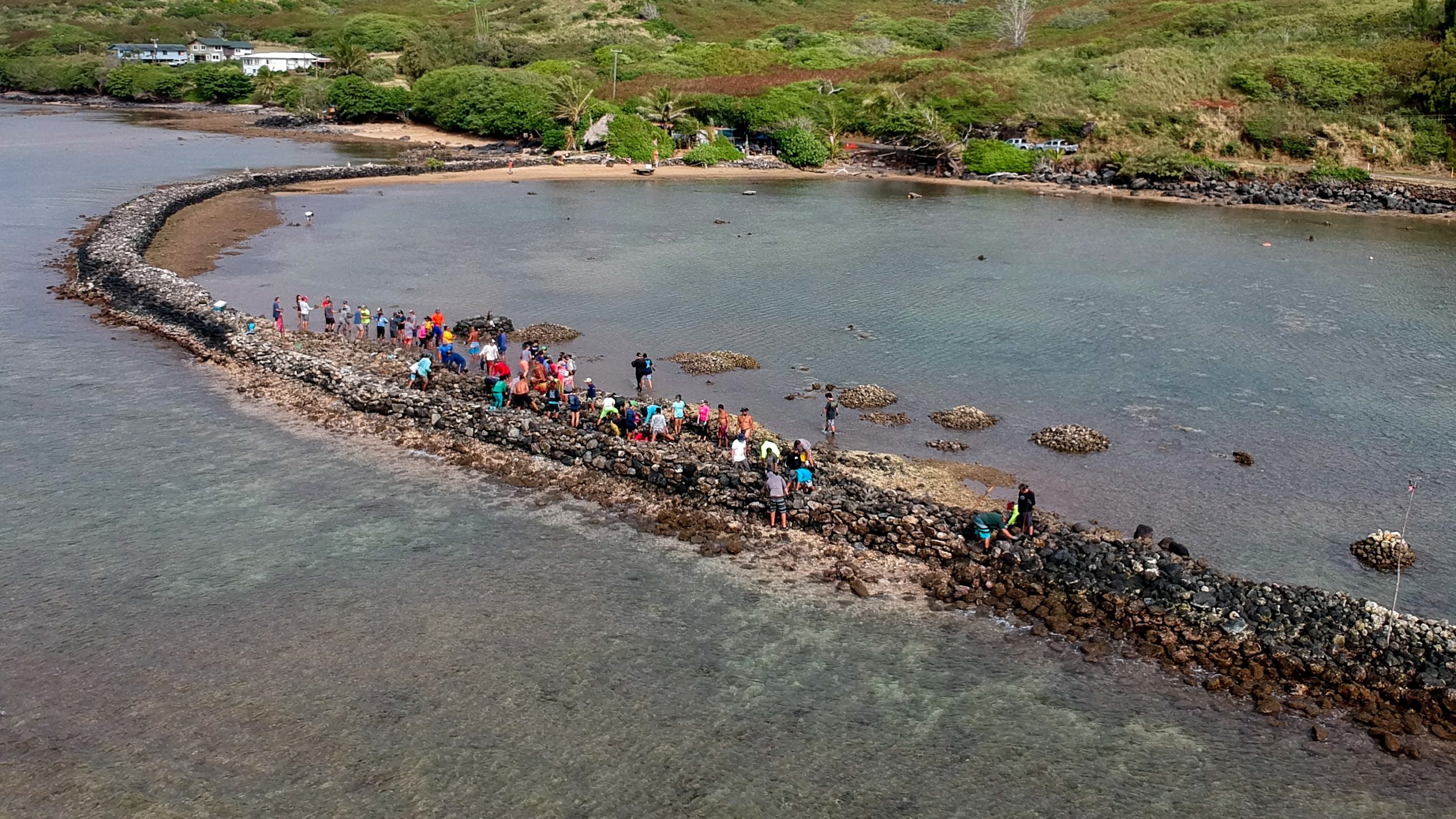ICCA Consortium Member Kuaʻāina Ulu ʻAuamo (KUA) shares stories about the struggle of communities to re-establish their relationship with the ocean and one and a half generations of effort to secure legal recognition of oceanic territories of life in Hawaiʻi
First published on 06/08/2022, and last updated on 06/18/2025
By Kevin Chang
Executive Director, Kuaʻāina Ulu Auamo (ICCA Consortium Member)
Aia a kau ka i‘a i ka wa‘a, mana‘o ke ola
One can think of life after there are fish in the canoe
This ʻōlelo noʻeau (Hawaiian proverb) feels most relevant to the efforts of rural and Native Hawaiian fishing communities over the past few decades. It is also a perspective to reflect on for World Oceans Day on the 8th of June.
What are you doing to care for your home, your fishery—your place? Is it thriving, full of life? Or is it struggling? Can it provide beyond sustenance? Or is it middling or barren? A vision for a more extraordinary life comes after we have assured our ability to feed ourselves.
As part of the greater global movements of Indigenous Peoples and local communities to care for territories of life, rural and Native Hawaiian communities in Hawaiʻi work to assure the sustenance of their “ice box” – their shoreline fishery – to provide for their community, family, and future generations. Today, as our ancestors before us, we work toward collective visions of a living and abundant shoreline full of limu (seaweed), full of fish, full of life.
This vision ultimately extends from reef to ridge, in the quality of our land-based ecosystems and the water that flows down from the cliffs bringing life to our shorelines, fishpond, fisheries, and limu beds.
In 1994, based on community efforts on the island of Molokaʻi, the State of Hawaiʻi passed the Community-based Subsistence Fishing Area (CBSFA) law “for the purpose of reaffirming and protecting fishing practices customarily and traditionally exercised for purposes of native Hawaiian subsistence, culture, and religion.”
Through long and hard-fought campaigns, community work, and organization, that effort is now giving birth to real change on the ground one and a half generations later. Communities are calling for a shift in conscience and a fishing ethic to one of Lawaiʻa Pono (virtuous fishing) based on their ancestors’ sustainable values and practices.
For rural and Native Hawaiian communities in Hawaiʻi, their territories of life begin in a cultural kīpuka, a green oasis in a lava field, where the power of traditional ecological knowledge still resides—on our shoreline. When these kīpuka begin to connect and grow, the entire landscape becomes green again.
Over the last decade and a half, community-based fishery management efforts created organizations like KUA (ICCA Consortium Member) and like kīpuka—connected through statewide and island-based networks like Kai Kuleana and the Maui Nui Makai Network.
In 2015, the first CBSFA rule package was adopted in the region of Hāʻena, Kaua’i. The fishery at Moʻomomi, Molokaʻi, sits at a precipice of approval as a Community-Based Subsistence Fishing Area. And Kīpahulu (Maui) and Miloli’i (Hawaiʻi island) are poised for potential passage before the end of the year.
On World Oceans Day 2022, we would like to share some of their stories with you.
We invite you to visit these pages for more details on these community fishery initiatives.
Kīpahulu – Miloliʻi – Moʻomomi – Hāʻena
As a Member of the ICCA Consortium in the East Austronesia and Pacific Islands region, we hope to share these struggles, lessons, and successes with our family in the greater Pacific and the world.
Throughout the world, Members of the ICCA Consortium in their respective homelands, from the shoreline to the peaks of their mountains, are global kīpuka in a movement of people connecting, building, and self-strengthening to heal our planet from their home base.
Our future on the canoe and island earth depends on the health of the lands and waters surrounding, nurturing, and upholding our communities. Let us think of them and start there. Before we dream too big in the plans, let’s secure the fish at home. For our home and the world, we envision and work for abundant and regenerative place-based efforts to regenerate the global icebox of island earth.
